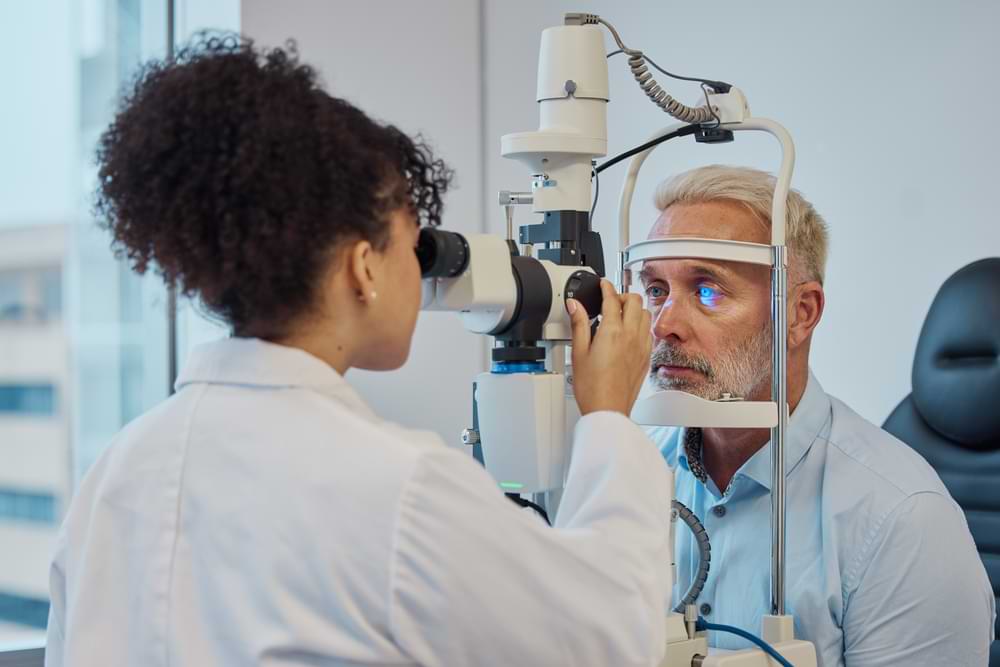Diabetic Retinopathy: Your Guide to Treatment Strategies

Diabetic retinopathy is an eye condition characterised by damaged blood vessels in the retina due to high blood sugar. It is one of the leading causes of vision loss and blindness in the world.
A common myth I encounter is the belief that only those with advanced or poorly managed diabetes are at risk. This couldn’t be further from the truth. Diabetic retinopathy can affect anyone with diabetes, including those who diligently manage their condition.
I’m Minh Van Tran, the principal optometrist here at VisionPro, where I’ve dedicated years to managing diabetic retinopathy among other ocular diseases in our Melbourne patients.
Let me share a story that underscores the importance of early detection and management. A middle-aged patient once came to us, having been diagnosed with diabetes only a year prior. He believed his risk of eye complications was minimal since their diabetes was “under control.” However, a comprehensive eye examination revealed early signs of diabetic retinopathy. Through prompt treatment and regular follow-ups, we managed to prevent significant vision loss.
I encourage you, especially if you’re living with diabetes, to prioritize your eye health. At VisionPro, we’re committed to providing comprehensive eye care that includes screening for diabetic retinopathy. Early detection is key to managing this condition effectively. Don’t wait for symptoms to become apparent.
Book an appointment with us today at our St. Albans or Footscray practices, and take the first step towards protecting your vision.
Or if you’d just like to know more about this prevalent eye disease, keep reading!
UPDATE: Watch the following video where our optometrist, Minh Van Tran, discusses diabetic retinopathy treatment.
Understanding Diabetic Retinopathy
Diabetic retinopathy is a condition that can sneak up on anyone with diabetes, be it Type 1 or Type 2. Its progression through various stages, from the early changes where symptoms might be non-existent, to more severe stages where vision loss becomes a real threat.
At VisionPro, we leverage advanced diagnostic technologies, such as fluorescein angiography and optical coherence tomography (OCT), to provide a detailed view of the retina’s health. These tools allow us to identify even the slightest changes in the blood vessels, enabling us to intervene early and effectively.
- Fluorescein angiography is a diagnostic procedure where a fluorescent dye is injected into the bloodstream. The dye highlights the blood vessels in the back of the eye so they can be photographed. This test allows healthcare providers to see circulation problems, swelling, leaking, or abnormal blood vessels in the retina, aiding in the diagnosis and management of conditions like diabetic retinopathy.
- Optical Coherence Tomography (OCT) is a non-invasive imaging test that uses light waves to take cross-section pictures of the retina. This allows for the observation of the retina’s layers, helping to diagnose and monitor various eye conditions, including diabetic retinopathy, by detecting changes in thickness, swelling, or the presence of fluid beneath the retina.
Diabetic retinopathy is a condition that progresses through four stages.
- Mild Non-proliferative Retinopathy: This initial stage is characterized by small areas of balloon-like swelling in the retina’s blood vessels. It’s often symptomless but can be detected through comprehensive eye exams.
- Moderate Non-proliferative Retinopathy: At this stage, blood vessels that nourish the retina may swell and change in shape, affecting blood flow. Vision problems may start to become noticeable.
- Severe Non-proliferative Retinopathy: More blood vessels become blocked, depriving several areas of the retina of their blood supply. This prompts the retina to signal for new blood vessels to grow.
- Proliferative Retinopathy: The most advanced stage, characterized by the growth of new blood vessels on the retina. These new vessels are fragile and can leak blood, leading to serious vision problems or blindness.
| Statistic | What it means |
|---|---|
| 1 in 3 | Individuals with diabetes will develop some form of diabetic eye disease. |
| 19.3% | People with diabetes who had non-proliferative diabetic retinopathy (AusDiab study). |
| 2.1% | People with diabetes who had proliferative retinopathy (AusDiab study). |
| 29.1% | Australians over 40 with diabetes who had diabetic retinopathy (Melbourne Vision Impairment Project). |
Table data from: https://baker.edu.au/-/media/documents/impact/outofsightreport.pdf
If you would like to know more about how diabetes affects the eyes and what a diabetic eye exam looks like, watch the following video from the Doctor Eye Health YouTube channel.
Treatment Strategies for Diabetic Retinopathy
In managing diabetic retinopathy, the journey begins with the fundamentals: controlling diabetes and embracing a healthy lifestyle. Maintaining stable blood sugar levels directly impacts the progression of this eye condition.
If the condition advances, we can refer you for ophthalmological treatments to stabilize vision and prevent further damage.
Laser treatment and photocoagulation therapy involve using a focused beam of light to target and seal off leaking blood vessels in the retina, a common issue in diabetic retinopathy. This process helps to prevent further vision loss by reducing abnormal blood vessel growth and swelling in the retina. The procedure is usually quick, performed in an outpatient setting, and is not considered painful, though some discomfort may be experienced. Recovery and post-procedure care are generally minimal, with most patients returning to their normal activities shortly after.
For those facing more advanced stages, we can discuss other options such as Vascular Endothelial Growth Factor (VEGF) inhibitors. These medications, injected directly into the eye, can halt the growth of abnormal blood vessels and reduce fluid leakage. The injection of VEGF inhibitors might cause a sensation of pressure in the eye, but the actual pain is typically minimal. Anesthetic drops are used to numb the eye before the injection to reduce discomfort.
In cases where diabetic retinopathy has progressed significantly, vitrectomy surgery may be recommended to remove vitreous gel from inside the eye. This procedure allows the surgeon to access the retina to repair damage caused by diabetic retinopathy, such as removing scar tissue or treating retinal detachment. It can help restore vision impaired by bleeding and scar tissue formation. The surgery is performed under local or general anesthesia, and recovery varies, with specific post-operative care required to ensure proper healing.
Frequently Asked Questions
How diabetes is caused?
You are more likely to develop type 2 diabetes if you are not physically active and are overweight or have obesity. Extra weight sometimes causes insulin resistance and is common in people with type 2 diabetes.
What are the warning signs of diabetic retinopathy?
Warning signs of diabetic retinopathy include blurred vision, floaters, dark areas of vision, difficulty with color vision, and vision loss.
Do all diabetics get retinopathy?
Not all diabetics develop retinopathy, but the risk increases with the duration of diabetes and poor blood sugar control.
At what age does diabetic retinopathy start?
Age of onset for diabetic retinopathy can vary, but individuals with prolonged diabetes duration are at higher risk, especially those diagnosed with diabetes in their teenage years or early adulthood.
How long does it take for diabetes to damage eyes?
Eye damage from diabetes can begin within 5 years of diabetes onset, but significant damage or symptoms might take longer to manifest.
Can you “feel” diabetic retinopathy?
You cannot physically “feel” diabetic retinopathy as it does not cause pain, but its effects on vision can be noticeable.
Is diabetic retinopathy reversible?
Some early changes may be managed or slowed down, but most damage from diabetic retinopathy is not reversible. Early detection and treatment can prevent further vision loss.
Conclusion
The message I want to emphasize is the undeniable importance of early diagnosis and effective treatment for diabetic retinopathy. Ignoring the signs or delaying treatment can lead to irreversible consequences, affecting not just vision but overall quality of life.
Choosing VisionPro for diabetic retinopathy management means opting for a practice that deeply understands the complexities of diabetes and its impact on eye health. Our experience in the local community has shown us the importance of a comprehensive approach to diabetic eye care.
Our team, led by experienced professionals like myself, ensures that each patient receives the highest standard of care.
Scheduling an eye exam appointment is the first step to restoring or maintaining quality of life.
Click on the “BOOK AN APPOINTMENT” button OR call either our St. Albans (03) 9364 5509 or Footscray ((03) 9687 8787 optometry practices.
